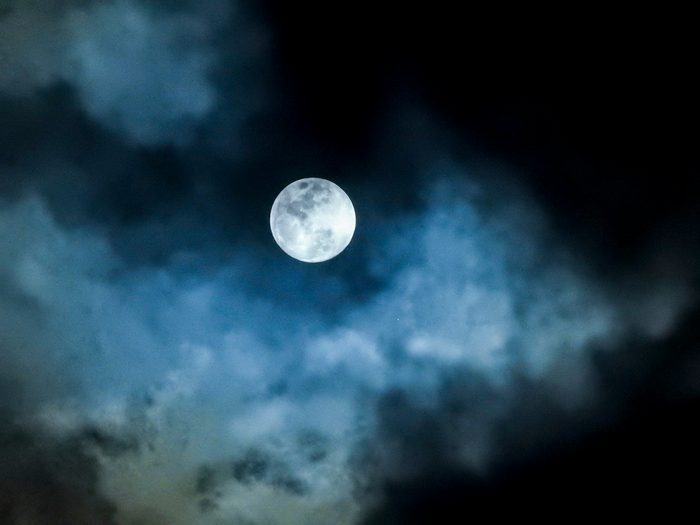
Bad moon rising?
Everything from pop culture to astrology to ghost stories is full (get it?) of cautionary tales about how full moons can make people—or even non-human creatures—act strange. And while there are ways a full moon can mess with your emotions, you definitely shouldn’t believe everything you hear about this lunar phenomenon. Here are some common moon myths, debunked by science.

Myth: Surgery isn’t safe during a full moon
There’s a prevailing myth that major surgeries should be scheduled according to your astrological forecast. According to one hypothesis, that’s because the tides could have an effect on your blood flow. While the full moon does tug at ocean tides, it doesn’t affect your blood flow. A study in the journal Anesthesiology, as reported on livescience.com, shows that the moon’s phase had zero effect on the outcome of some 18,000 heart-related surgeries performed at the Cleveland Clinic between 1993 and 2006. The moon has very little effect on the liquid in your body in general. In fact, some studies suggest that it’s actually safer to have heart surgery during the full moon. Studies show that those surgeries have better outcomes and shorter hospital stays—but experts aren’t sure why. Here are more common weather myths you shouldn’t believe.

Myth: The moon has a dark side
Despite being the title of Pink Floyd’s blockbuster 1973 album, the “dark side of the moon,” doesn’t actually exist. According to NASA, what we call the “dark side” is actually a “far side.” That’s because the moon rotates, so there is always 41 percent of the moon’s surface that can never be seen from earth. And despite appearances, scientists have figured out that it’s not actually dark on the far side. The few dark spots you can see from earth are the result of “volcanic plains.” Check out these spooky facts about the moon.
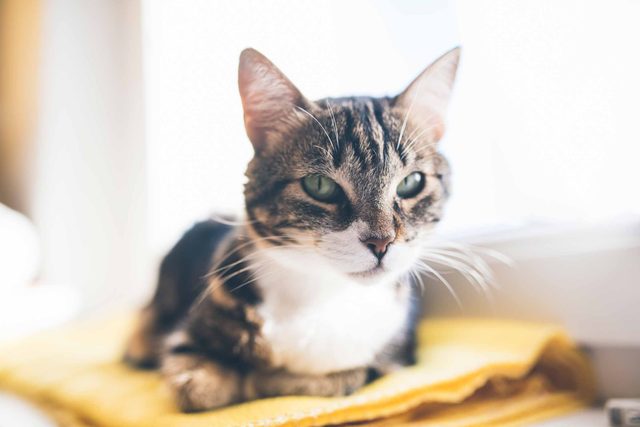
Myth: Cats and dogs go crazy during a full moon
Some people, even veterinarians, believe that cats and dogs freak out during a full moon, like there’s some kind of lunar force that taps into your pet’s psyche. And studies do show an uptick in emergency room visits for cats and dogs during a full moon and in the days before and after. However, that’s probably not actually due to the moon. It’s been argued that there’s so much more illumination on evenings when the moon is full that pets tend to stay out later, frolicking in the moonlight—and potentially getting into trouble.
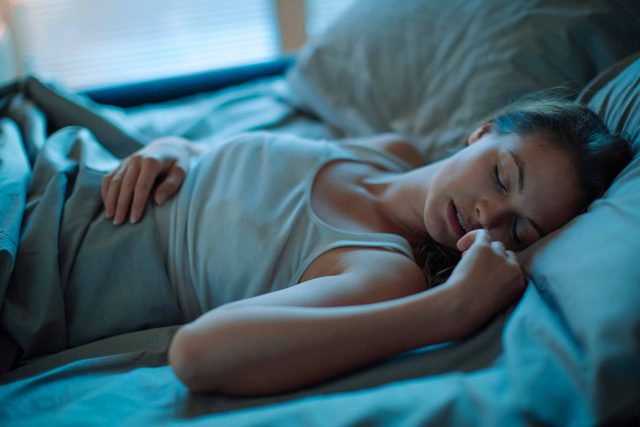
Myth: The full moon has zero effect on your sleep
Actually, a group of scientists in Switzerland were shocked when they discovered that adults do seem to get less rest during a full moon. In their study, they found that it took people about five minutes longer to fall to sleep, and they woke up 20 minutes sooner. They also spent 30 percent less time than normal in a state of deep sleep. The researchers haven’t yet figured that part out, but it might have something to do with “circalunar” rhythms—our natural daily cycles.
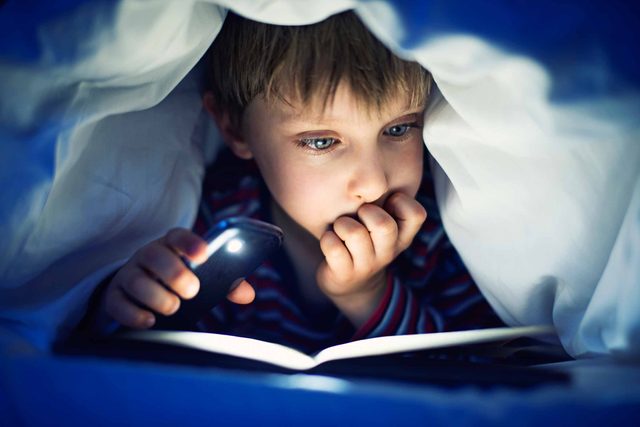
Myth: Kids get hyper during a full moon and won’t go to sleep
There’s a widely held belief throughout many cultures that a full moon makes kids more active. But when scientists finally got around to testing this theory, they discovered that kids are always active—during a new moon, full moon, half moon, crescent moon or any moon that happens to be in the sky. Kids will bounce off the walls at bedtime and any old time. According to the researchers, sleep was “1 percent less during the full moon,” which is not “clinically meaningful.”
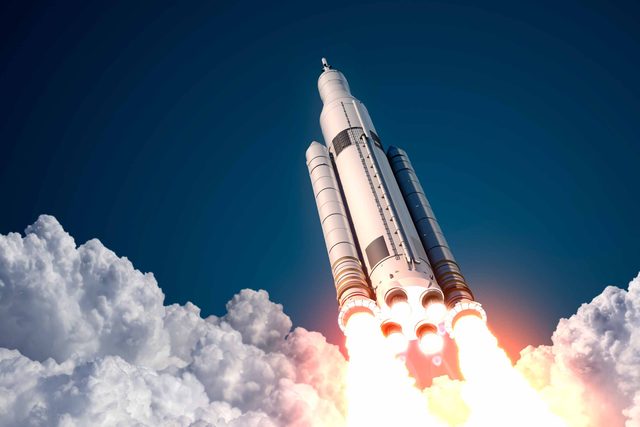
Myth: The moon landing didn’t really happen
People have vast conspiracy theories covering all the possible reasons why the moon landing in 1969 did not actually happen—and every one of them has been debunked. Conspiracy theorists examined every inch of the footage and asked questions such as, “Why is the flag waving when there isn’t a breeze on the moon?” Actually that’s “angular momentum”—because the astronauts are twisting the pole and unrolling the fabric. “Why aren’t there any stars in the background?” Because the camera technology couldn’t capture them. Basically, the moon landing doubters apply earth atmosphere logic to the images. They also don’t account for the intricacies of the technology for rockets and cameras.
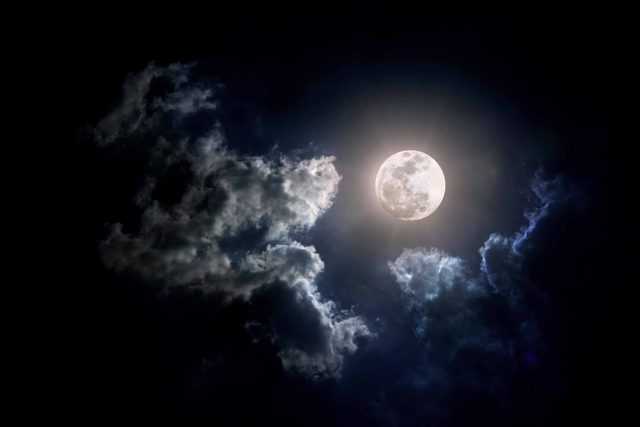
Myth: Full moons make everyone nuts
The word “lunatic” derives from the Latin word “luna,” also the name of the ancient moon goddess. For centuries people have associated the full moon with crazy times and crazy behavior. Even Hippocrates, “father of modern medicine,” blamed insanity on the moon goddess’s chariot ride across the sky. The full moon has historically been blamed for craziness and monsters, including werewolves. Full moons are also supposed to be the favored event for vampires. It’s true that there is slightly more crime and more visits to the E.R. during a full moon, but there’s not enough evidence to peg it to the moon’s phases. Scientists account for the “anecdotal” bump in criminality to the natural increase in activity when there’s more light. Check out these unanswered questions scientists still have about the moon.
- LiveScience: “Full Moon Does Not Affect Surgery Outcomes”
- Popular Science: “Getting Heart Surgery? Wait For The Full Moon”
- The Washington Post: “NASA gives us an amazing look at the ‘dark’ side of the moon”
- LiveScience: “Full Moon Sends More Dogs and Cats to Emergency Room”
- LiveScience: “Bad Sleep? Blame the Moon”
- Frontiers in Pediatrics: “Are Children Like Werewolves? Full Moon and Its Association with Sleep and Activity Behaviors in an International Sample of Children”
- LiveScience: “Strange Things Do Happen at Full Moon”
